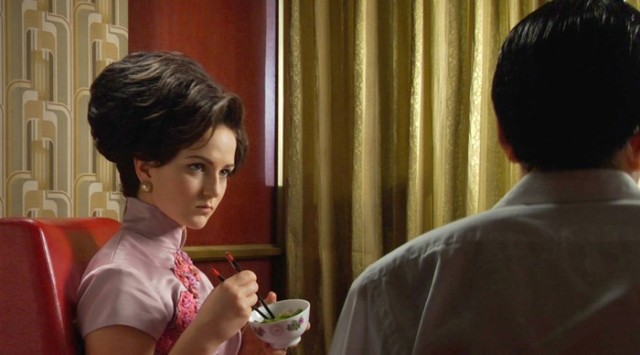Ming Wong and the "Glory Days" of Singaporean Cinema

Ming Wong: Life of Imitation comes to the Frye on January 22.
In the not-too-distant past, Singapore was a wild child: a tiny tropical port city with opium dens and brothels issuing siren calls to all the wild-eyed travelers. Its national cinema made movies with Malay Muslim women in bikinis go-go dancing on the beach—a Southeast Asian Beach Blanket Bingo. Sounds a bit different from the squeaky-clean, anti-gum-chewing metropolis we know now.
Artist Ming Wong appreciates the incongruity of his native Singapore; it’s an identity crisis that, as a Berlin-based, London-educated son of Chinese immigrants, he also feels keenly. With his award-winning exhibit Life of Imitation, opening at the Frye on January 22, he addresses identity in its many forms—language, race, gender, nationality—through the lens of Singaporean cinema of the 1950s and ’60s. “The glory days of national cinema,” he said over coffee this morning during Art Klatch at Café Presse.
“In the film industry you had a very unique situation,” Wong, 39, explained. “You had Chinese film producers who owned the cinemas. You had film crews, directors, and camera people from India. The actors were all Malay Muslim actors from Malaysia, Indonesia, and Singapore, because the language used at the time was primarily Malaysian. You had this multicultural industry referencing films from Hollywood, European films, Chinese films, Japanese films. … It was a utopian collaboration.”
Things weren’t so rosy beyond the lens. The so-called “little red dot” of Singapore had long been occupied by foreign governments: first its northern neighbor Malaysia, then the British Empire, then the Japanese during World War II, then back to the Brits…you get the idea. Finally, in the late 1950s the territory began a bitter struggle for independence that didn’t end until 1965. For the nation of feuding immigrants, the great escape came through film. “There might be race riots during the day, but everyone went to the same cinema at night,” Wong said.
After Frye curator Jo-Anne Birnie Danzker experienced Life in Imitation at the Venice Biennale in 2009, she encouraged Wong and curator Tang Fu Kuen to bring the multimedia exhibit stateside. Now, for his first U.S. solo show, Wong reimagines Singaporean film and popular mid-century world cinema through multiscreen video installations; film memorabilia; and original billboards created by Singapore’s last surviving billboard painter. Fans of Douglas Sirk’s 1959 Hollywood melodrama Imitation of Life (the exhibit’s namesake) might recognize an iconic scene with a mixed-race daughter screaming at her black mother “I’m white. White!” Except in Wong’s re-creation, Chinese, Indian, and Malay men fill those roles. Men in drag? What will the Singaporean government think?
You’d be surprised: They funded the exhibit.
Ming Wong: Imitation of Life is at the Frye Art Museum from Jan 22-Feb 27.




